
Centre Georges-Pompidou
The Center Georges-Pompidou is a museum and cultural center in the middle of the city. The two architects Renzo Piano and Richard Rogers had an unusual approach, they didn't want to build a monument for the president, but a meeting place for the people. They planned a tall building in order to gain more space in front of the museum. For them the square was more important than the actual building. They were very lucky that the jury recognized the potential of their clumsy design, which was by then much higher than today's building. Rogers and Piano wanted to build a mix of Britsh Museum and Times Square.
They were commissioned in 1971, but had to adapt their structure to the fire protection requirements. The Center Pompidou was thereby reduced in hight and the open spaces were divided by fire protection walls. The metal supports were given fire protection cladding, which was again covered with metal. The lower height enabled access by an external escalator, which became the trademark of the Center Pompidou. The facade at Place Georges Pompidou is glassy and permeable, while all the installation lines are on the side facing Rue Beaubourg. From this side, the Center Pompidou looks like a colored chemical factory.
When it opened in 1977, the Center Georges-Pompidou was a turning point in the history of architecture. The modern architecture had reached a dead end. The brutalist concrete architecture and monotonous glass boxes were mostly rejected. Modern architecture ignored the place and its history. The Center Pompidou was celebrated, it gave the city back to the residents, it worked like an Italian piazza. The Center Pompidou was the beginning of Richard Rogers and Norman Foster's high-tech architecture.
Other buildings by Richard Rogers:
Lloyd's of London Leadenhall Las Arenas Aeropuerto de Barajas Skylight Tower Tribunal de Grand Instance
Other buildings by Renzo Piano:
The Shard Art Institute of Chicago California Academy of Sciences
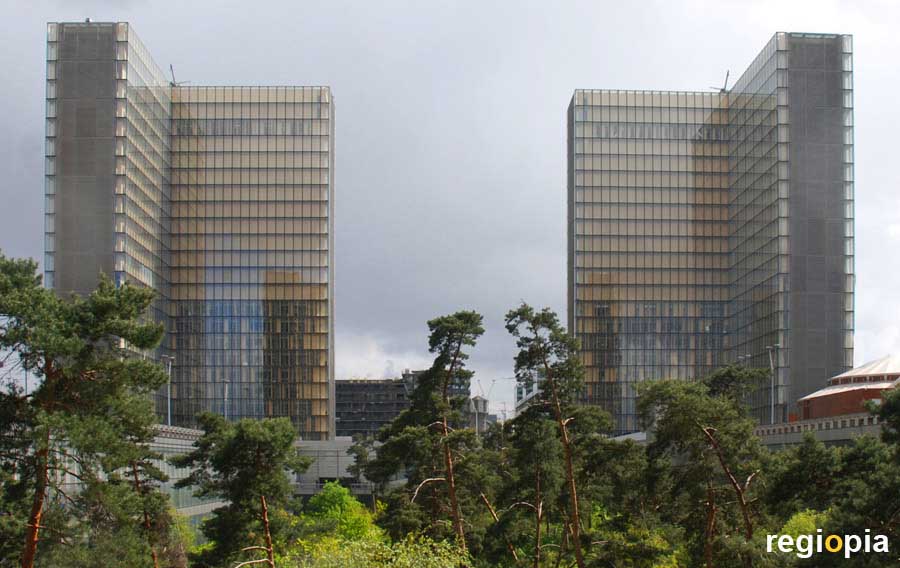
Bibliotheque national de France
The new National Library of France was built in 1996 by Dominique Perrault. Four high-rise buildings, which tower above a wooded courtyard like open books, make the building unique. The low-rise buildings that connect the book towers are glazed, from here you can see the green courtyard. The forest was brought to Paris from Normandy in one day and can grow there undisturbed. The courtyard is only open to visitors once a year. King Francis I decreed in the 16th century that all publishers must send a copy of every book printed in France to the National Library. Over the centuries, over 30 million books have been stored. Around 10 million books are stored in the François Mitterrand Library. The other copies are spread over other locations of the Bibliotheque national de France. Since the library was built on the initiative of Francois Mitterrand, the building was named to honor of the president.
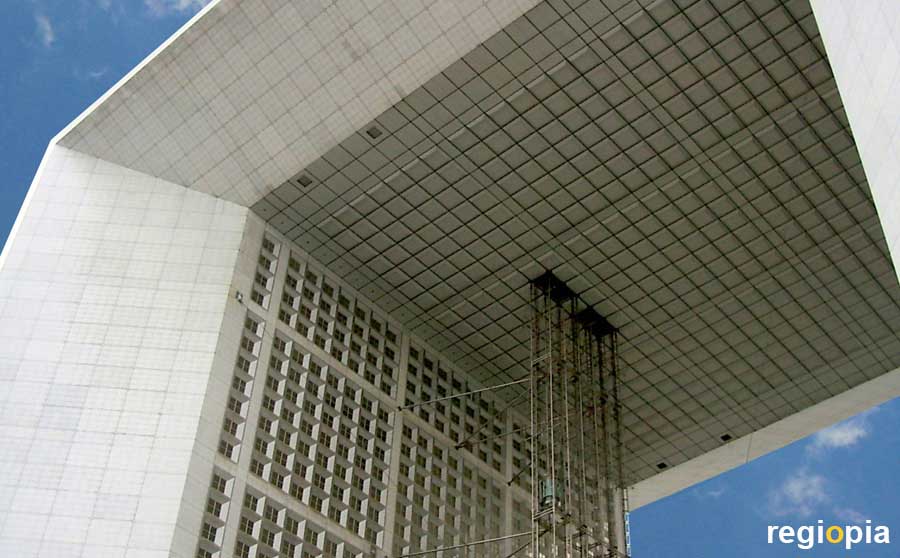
Grande Arche
The "Grande Arche de la Fraternité" in La Défense forms the end point of the major axis of Paris. The cube-shaped arch was built in 1989 to mark the 200th anniversary of the French Revolution. The architect was the Danish Johan Otto von Spreckelsen, who died in 1987 and was not able to witness the inauguration. The Grande Arch de la Défense was completed by the French architect Paul Andreu.
The 111 m high cube is 107 m wide and 112 m long. The Axe historique cuts through Paris and begins at the Palais du Louvre, the former castle of the king. The Arc de Triomphe stands approximately in the middle.
The shape of the Grand Arche is a tesseract, a large cube with a smaller cube in the centre. The corners are joined together and form sloping surfaces. The inner cube forms the air space. In the side area there are 35 office floors that are glazed on the long sides, while the end faces are covered with light granite slabs. Sails called "Les Nuages" (clouds) float in the opening, loosening up the strict square grid of the facade. Glass elevators pass through the opening to the roof of the "Grande Arche". There is a viewing platform from which you can see the axis down to the Arc de Triomphe.
The "Grande Arche" was one of President François Mitterrand's Grands Projets.
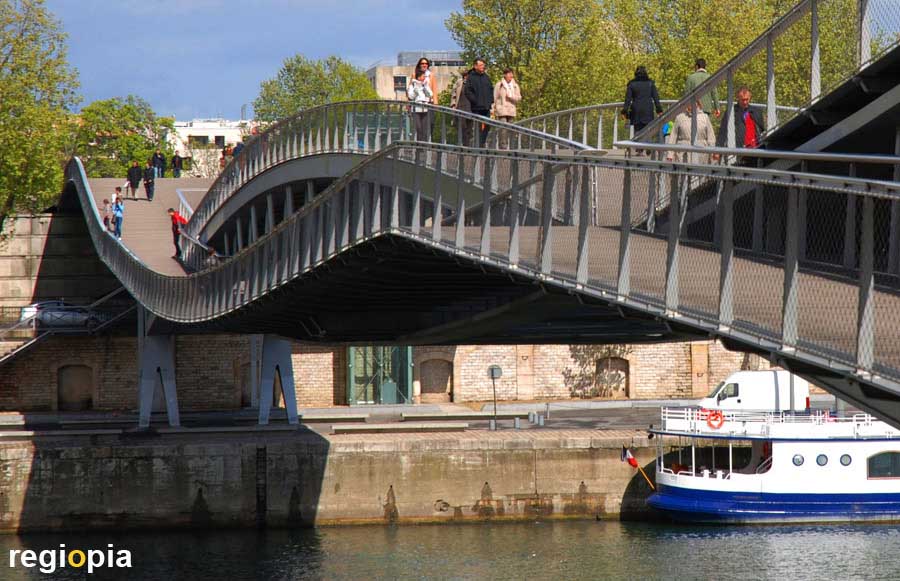
Passerelle Simon Beauvoir
The pedestrian bridge in the east of Paris spans from the National Library to the Parc de Bercy. The curved bridge of Dietmar Feichtinger was opened in 2006. The "Passerelle Simon Beauvoir" connects the river walk below with the promenade above. The bridge connects two sides of the river on two different levels.
www.feichtingerarchitectes.com
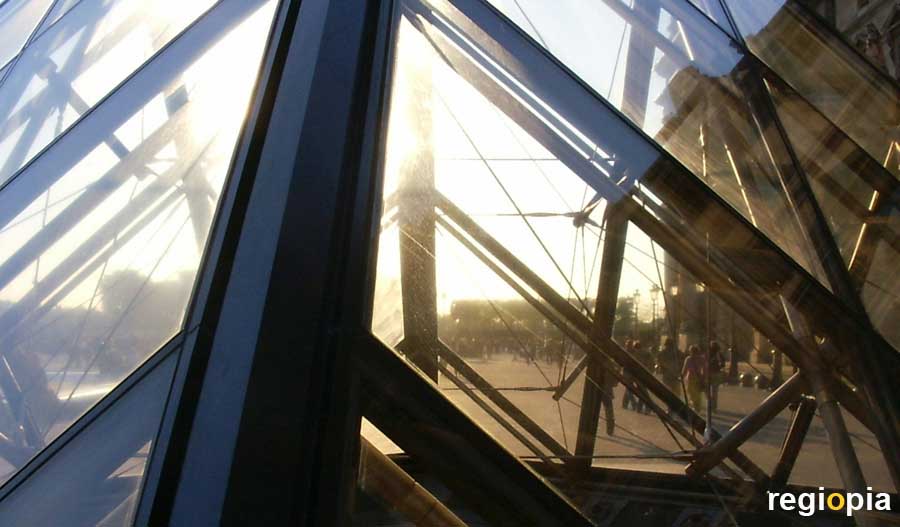
Musee du Louvre
Like the National Library and the "Grande Arche", the extension of the Louvre was also a "Grande Projet" by President François Mitterand. The architect of the glass pyramid built in 1989 was I.M. Pei. François Mitterand was a great admirer of ancient Egypt and got involved in all the great projects. The pyramid in front of the Louvre stands at the intersection of the Great Axis with the prime meridian of Paris, which is marked with Arago Medallions in the streets of the French capital. The proportions are exactly the same as those of the Cheops pyramid in Giza. Mitterand had known that he had cancer since 1981 and wanted to set a monument for himself with the Grande Projets. Like Napoleon, he wanted to shape the capital through large building projects. The pyramid is the most important symbol for him. I.M. Pei has reinterpreted the pyramid, it is not a huge mountain made of stones but rather small and made of glass. Since it is illuminated at night, it shines out on all buildings in the area. Functionally, it is the new entrance to the Louvre Museum. Light falls through the glass pyramid into the underground space from which corridors lead to the exhibition rooms. In the Louvre you can find many treasures from Egypt because Napoleon conquered the country in 1798. The decisive battle took place at the pyramids.
Other buildings by I.M. Pei:
Bank of China Deutsches Historisches Museum
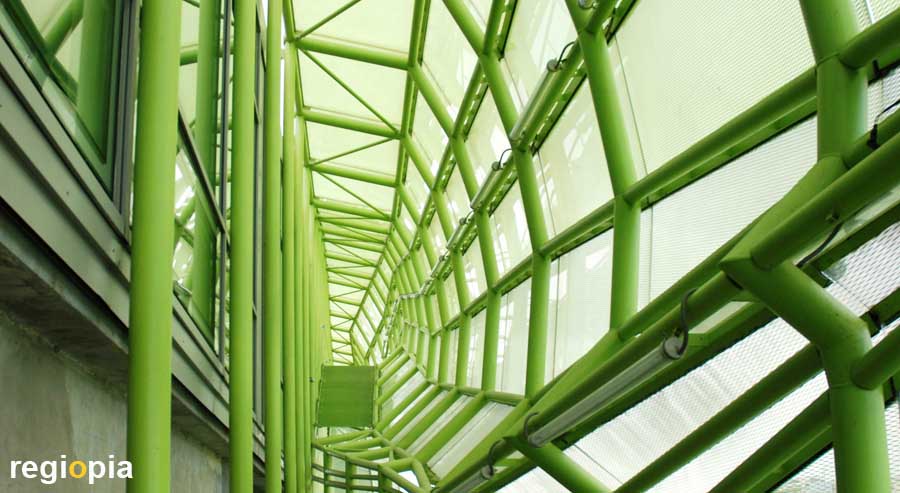
Cité de la Mode et du Design
The architects Jakob + MacFarlane transformed a warehouse on the River Seine into the center for fashion and design. A futuristic steel glass object was hung at the old concrete structure of the hall in 2008. "La Cité de la Mode et du Design" is like a bright, green parasite overgrowing the old building.
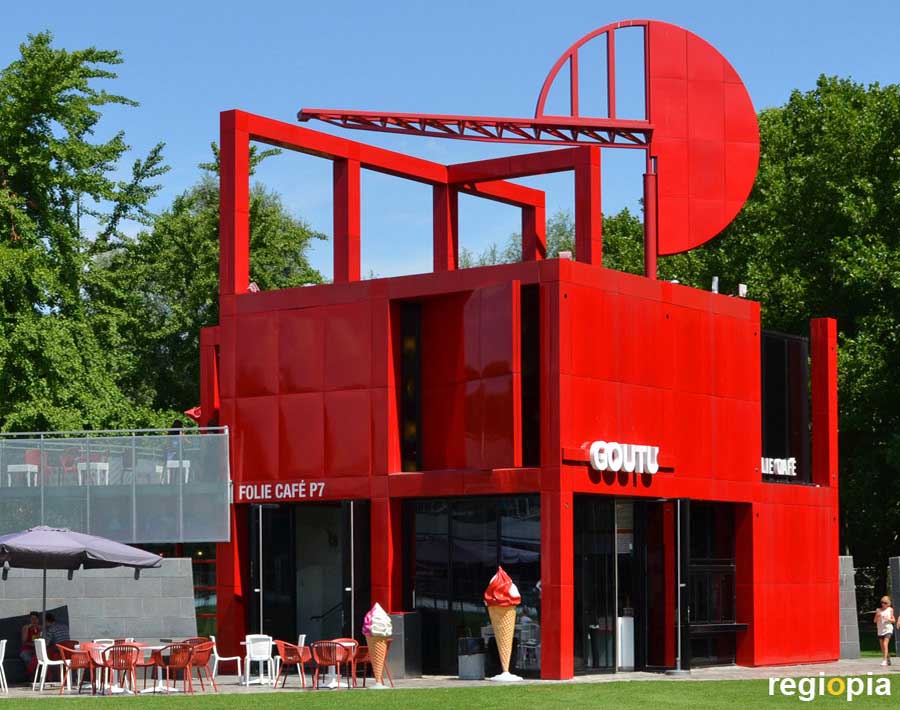
Parc de la Villette
One of the largest parks in Paris was built on the former slaughterhouse in 1983. The Swiss architect Bernard Tschumi designed the Parc de la Villette with 26 red cubes "Folies" that stand on a grid in the park. The deconstructivist elements structure the park and are connected by paths and footbridges. The center of the park is the Canal de l 'Ourcq, which cuts through the green space. The Parc de la Villette offers other architectural sights, such as the Philharmonie de Paris by Jean Nouvel or the Cité de la musique by Christian de Portzamparc.
Buildings by Tschumi:
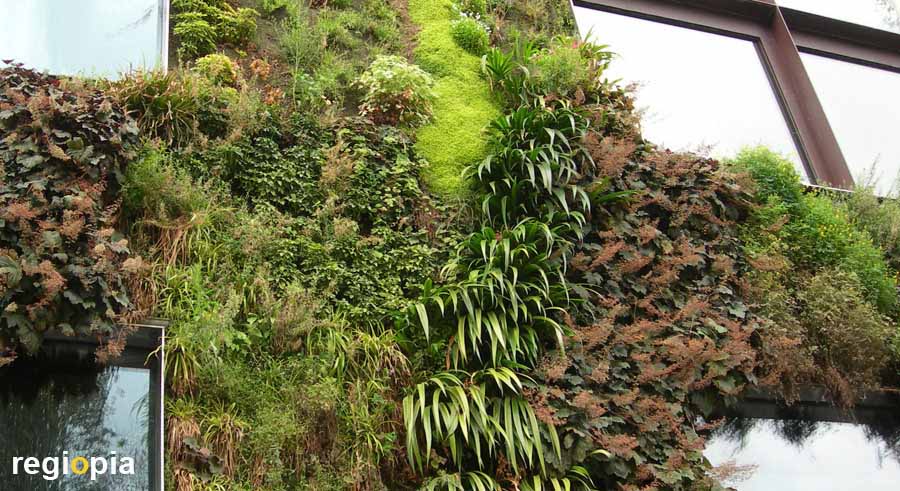
Musée du quai Branly
Jean Nouvel's Musée du quai Branly opened in 2006. The building consists of a curved glass facade that takes up the curvature of the nearby Seine. Colored cubes protrude from the facade by the river. Parts of the facade were covered with plants and grass by Patrick Blanc, it was one of the first buildings with vertical facade greening.
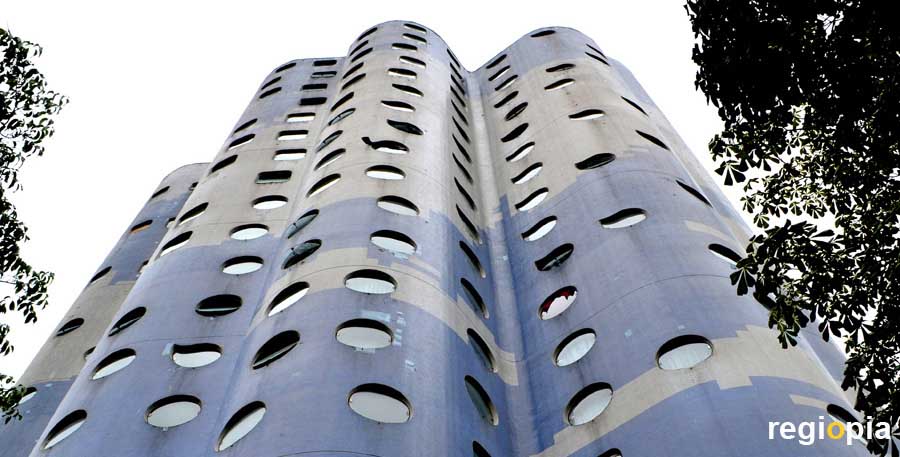
Tours Nuages
The housing project of Emile Aillaud consists of 18 towers, the tallest is 105 m high. The rounded facades are decorated with tiles, whose patterns and the shape of the floorplan reminds of clouds (French Nuages). The residential towers in Nanterre were completed in 1977.
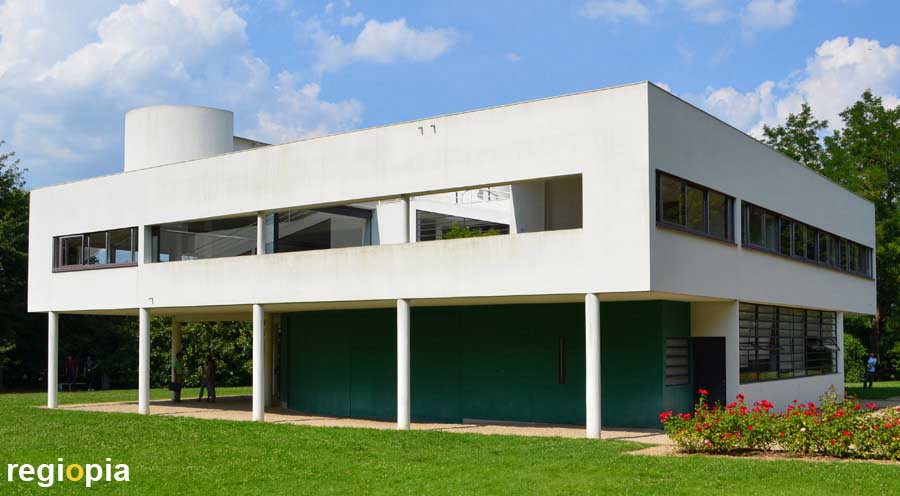
Villa Savoye
Le Corbusier built the villa for the Savoye family in 1931. The building is considered to be an architectural icon. The transitions between inside and outside make the house very special. The "Villa Savoye" is now a museum and can be visited. The buildings of "Le Corbusier" have been listed as UNESCO World Heritage Site since 2016. See link for opening times.
Buildings by Le Corbusier:
Cité Frugès Cité Radieuse Corbusierhaus Berlin Centre Le Corbusier National Museum of Western Art UN New York
http://villa-savoye.monuments-nationaux.fr
Map architecture in Paris
ads
Architecture Guide Paris
ads
regiopia architecture guides
ads


